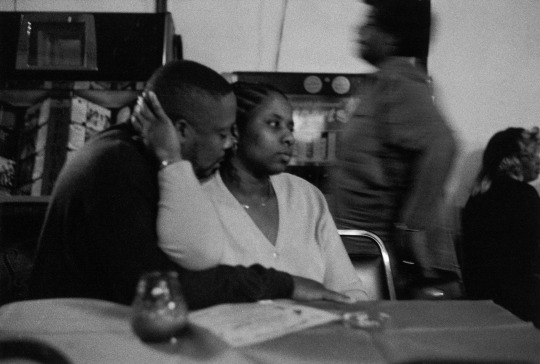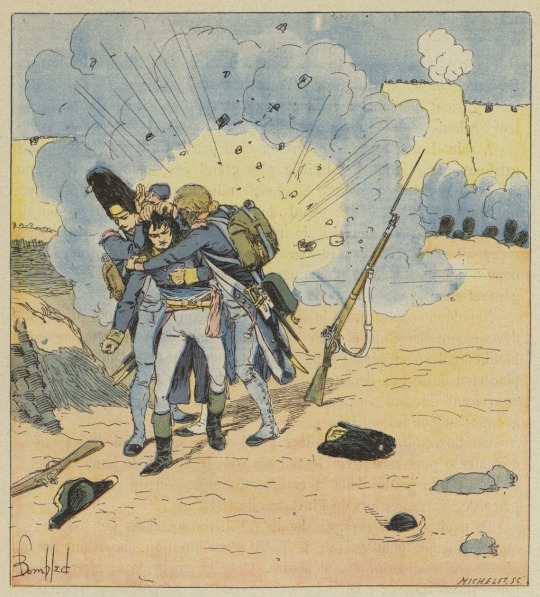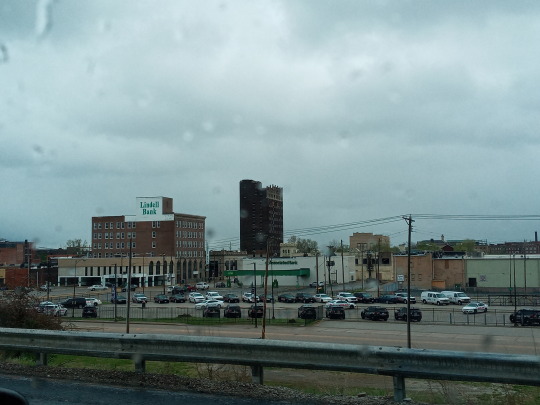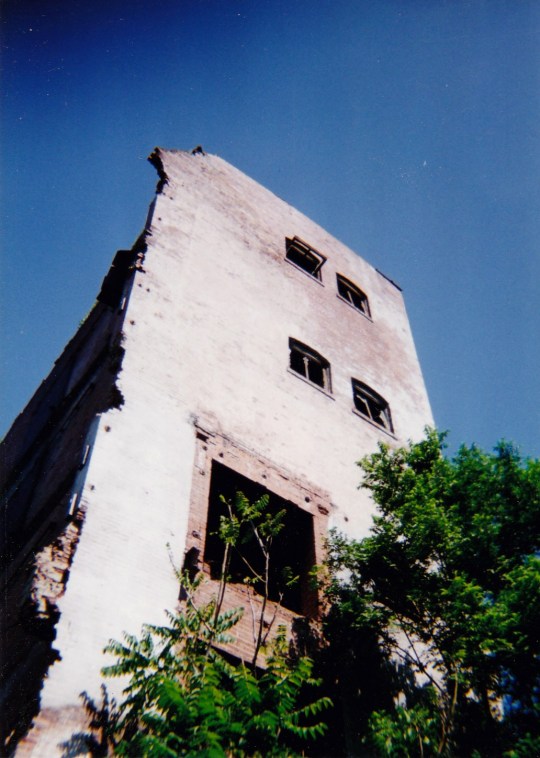#East St. Louis
Explore tagged Tumblr posts
Text

LOVERS, RED DOOR LOUNGE. EAST ST LOUIS, ILL., 1986.
Photo: Gerald Cyrus
13 notes
·
View notes
Text
On July 3, 1917, continuing violence raged in East St. Louis, Illinois, as white mobs attacked Black residents and destroyed their homes and other property. The primary outbreak of violence began on July 2, 1917, when white residents of East St. Louis and other nearby communities ambushed African American workers as they left factories during a shift change. The National Guard was called in to suppress the violence but they were ordered not to shoot at white rioters; some troops reportedly joined the mobs targeting the Black community.
In 1916 and 1917, thousands of African Americans moved from the rural South to East St. Louis in search of industrial work. White residents, along with the city's political leaders, attempted to discourage Black migration and prohibited railroads from transporting Black people to the region. When these attempts failed, white residents used violence to intimidate, expel, and destroy the African American population.
From July 2 through July 5, 1917, at least 39—and some estimate as many as 200—African Americans were shot, hanged, beaten to death, or burned alive after being driven into burning buildings. The riots caused more than $400,000 in property damage and prompted 6,000 African Americans—more than half of East St. Louis’s African American population—to flee the city. While 105 people were indicted on charges related to the riot, only 20 members of the white mob received prison sentences for their roles in perpetrating the extreme violence and killings.

#history#white history#us history#black history#am yisrael chai#jumblr#republicans#democrats#East St. Louis#Illinois
6 notes
·
View notes
Text

4 notes
·
View notes
Photo
Sivan Vahki, in Coolidge, Arizona, USA, is associated with the Hohokam culture. It was abandoned around 1450 CE.
Werowocomoco, in Jametown, Virginia, USA, is associated with the Powhatan, an Algonquin-speaking group. It was abandoned in 1609 after run ins with the Jamestown colonists.
Cahokia, in East St. Louis, Illinois, USA, is associated with the Mississippian culture. It was abandoned circa 1350 after several floods and a general collapse of the Mississippian world.
Teochtitlan, in Mexico City, Mexico, is associated with the Aztec. It was conquered by the Spanish in 1521.
Tikal / Yax Mutal, in Guatemala, is associated with the Maya. It peaked in the 200 to 900 CE period and was abandoned before the Spanish arrived.
Omahkoyis ("big tree lodge"), in Edmonton, Alberta, Canada, is associated with the Blackfoot, another Algonquin-speaking group. It was established by 3,000 BCE or perhaps as early as 12,000 BCE and was assimilated by British Canada in the early 19th century.
Qusqu ("boundary stone" or "navel"), in Cuzco, Peru, is associated with the Killke, Quechua, and Inca. It was conquered by the Spanish in 1532.
Uttewas ("white-slope village"), in Old Massett, British Columbia, Canada, is associated with the Haida. It was established during the last ice age (c. 14,000 to 19,000 YBP, or circa 17,000 to 12,000 BCE) and was partially assimilated by British Canada in the mid-19th century.








Pre-colonial Native American cities/settlements/meeting sites.
Sivan Vahki: just north of Casa Grande, Arizona, Sivan Vahki or Siwañ Waʼa Ki: was a large farming and trade network site of the Sonoran Desert people starting in the early 13th century.
Werowocomoco: With habitation beginning from the 13th century, Werowocomo was a village that later served as the headquarters of the werowance Wahunsenacah, Paramount Chief of the Powhatan confederacy.
Cahokia: Mississippian culture city dating from circa 1050–1350 CE, containing elaborately planned community, woodhenge, mounds, and burials.
Tenochtitlan: built atop a lake, Tenochtitlan was an Aztec altepetl, and was the largest city in the pre-columbian Americas at its peak. It is considered one of the most impressive cities in North America, and is today known as Mexico city.
Tikal: one of the most powerful ancient kingdoms of the Maya, and dates back as far as the 4th century BC, and may have had a population of up to 90,000.
Omahkoyis: Meeting place and trading and cultural hub for the Blackfoot, and later other tribes as well as settlers. The Blackfoot and their ancestors had inhabited the area as early as 12,000 BC, and would later also be known by other names. Colonizing efforts turned the area into a settlement, known today as the city of Edmonton.
Qusqu: also known as “Cuzco”, the city served as the capital for the Inca Empire from the 13th century up into the 16th century upon colonization. However, evidence shows that The Killke people occupied the region from 900 to 1200 CE, prior to the arrival of the Inca, and had constructed a fortress about 1100 CE.
Uttewas: later known as “Old Masset”, was one of the largest Haida villages on Haida Gwaii, and is home to a number of important cultural artifacts, such as numerous totem poles. Today its land is legally designated as Masset Indian Reserve No. 1.
#Sivan Vahki#Coolidge Arizona#Hohokam#1150#1100s#12th century ce#1450#1400s#15th century#1200s#13th century ce#1300s#14th century ce#Werowocomoco#Jamestown Virginia#Powhatan#Algonquin#1270#1609#13th century#14th century#1500s#16th century#1600s#17th century#Cahokia#East St. Louis#Illinois#Missouri#Mississippi River
1K notes
·
View notes
Text

East St. Louis, Illinois April 2024
0 notes
Text
Anatomy of Melancholy // Robert Wrigley
Lucy Doolin, first day on the job, stroked his goatee and informed the seven of us in his charge his name was short for Lucifer, and that his father, a man he never knew, had been possessed, as his mother had told him, of both an odd sense of humor and a deep and immitigable bitterness. Also that the same man had named Lucy’s twin brother, born dead, Jesus Christ. These facts, he said, along with his tattoos and Mohawked black hair, we should, in our toils on his behalf, remember.
As we should also always remember to call him only by that otherwise most womanly diminutive, and never, he warned, by his given nor surname, least of all with the title “Mister” attached, which would remind him of that same most hated father and plunge him therefore into a mood he could not promise he would, he said, “behave appropriately within.” Fortunately, our job, unlike the social difficulties attached thereto, was simple: collect the trash from the county’s back roads.
Although, given Lucy’s insistence on thoroughness, this meant not only beer cans and bottles, all manner of cast-off paper and plastics, but also the occasional condom too, as well as the festering roadkill fresh and ridden with maggotry, or desiccate and liftable only from the hot summer tar with a square-bladed shovel, all of which was to be tossed into the bed of the township flatbed truck we ourselves rode to and from the job in. By fifty-yard increments then we traveled. He was never not smoking a cigarette.
Late every afternoon, at the dump, while we unloaded our tonnage of trash, he sat with Stump McCarriston, sexton of the dump and the dump’s constant resident, in the shade, next to a green, decrepit trailer we marveled at and strangely envied, since every inch of wall we could see through the open door was plastered with fold-outs and pages from every Stump-salvaged Playboy and nudie magazine he had ever found among the wreckage there. Stump, we understood, was the ugliest man on earth.
Even had Lucy not told us so, we would have known, by the olfactory rudeness within twenty yards of his hovel, that he never bathed. And once, while we shoveled and scraped, he took up the .22 from the rack beside his door and popped with amazing accuracy three rats not fifty feet from us, then walked to their carcasses, skinned them out, and hung their hides on a scavenged grocery store rack to dry. He was making, Lucy explained, a rat hide coat we could see, come the fall, except for school.
As for school, it was a concept Stump could not fathom and Lucy had no use for, on the truck’s dash all that summer Robert Burton’s Anatomy of Melancholy, a tome he said he’d read already eleven times, this summer being the twelfth. We thought, in some way, it might have had to do with something like the gallery Stump’s trailer contained, the first word of its title meaning something to us, the last nothing at all. There were things about men we might be unable ever to know, which we somehow knew was lucky. And Lucky, incidentally, was the name of the cat, fat and mangy, that, once Stump was back in the shade with Lucy, began, one by one, to consume the hideless rats. The town we came from was sinking into the emptiness of a thousand abandoned coal mine shafts beneath it, and rats were more common than hares and universally despised. They shamed us, it seemed, as we were shamed by ignorance and curiosity— the bodies of those women on the walls, the provenance of rats the very earth offered up like a plague, the burden of a name like Lucifer or Stump, whose name, as it was scrawled on his mailbox, seemed to be Stumplin Reilly McCarriston, Esquire. Of the seven of us, one would die in Vietnam, one, after medical school, would hang himself from a beam in his parents’ basement, the others merely gone, vanished in actuality if not in memory. Leaving me, alone, to tell this story. How Stump would spend his last twenty years in prison, having shot Lucy—one slender, flattening .22 slug
through the forehead—as he stood fifty feet away, balanced atop the tub of an ancient wringer washer, arms extended, like Jesus Christ, said Stump, whose trailer was bulldozed into the dump itself even before the trial, and who, no doubt, by some court-appointed lawyer if not the appalled sheriff himself, was forced to bathe and shave, to step into the unknown country of a scentless white shirt and black businessman’s trousers, in order to offer his only yet most sincere defense, that Lucifer—Mr. Doolin, as the court insisted—had told him to.
#poetry#Robert Wrigley#American poetry#rats#class#garbage men#town dump#what work is#work#story poems#men & boys#growing up#Illinois#East St. Louis#working class poetry#Southern Illinois
0 notes
Video
Cash 4 Gold by Thomas Hawk
#America#Cash 4 Gold#Cash for Gold#East St. Louis#Illinois#USA#United States#United States of America#bw#fav10#flickr
0 notes
Text

Home of Miles Davis at 1701 Kansas Avenue in East St. Louis, Illinois
0 notes
Text
Tina Turner, artista con fuertes lazos a St. Louis muere a los 83 años de edad
Tina Turner ha muerto. Tenía 83 años de edad. #TinaTurner #ReinadelRock #ProudMary
Saint Louis • Tina Turner, la icónica cantantes de Rhythm and Blues y denominada la “Reina del Rock & Roll” falleció en su hogar en Suiza el martes tras una larga lucha con varias enfermedades. La leyenda musical se había retirado del público años atrás después de padecer de derrame cerebral y tener daño renal en sus riñones. Tina Turner, nacida Anna Mae Bullock el 26 de Noviembre de 1939 en…

View On WordPress
1 note
·
View note
Text

State St, East St. Louis, Illinois.
136 notes
·
View notes
Text

At St Jean d'Acre, the grenadiers Daumesnil and Souchon cover Bonaparte with their bodies to protect him from the shrapnel of a bomb blast.
by Louis Charles Bombled
#napoléon#napoleon#bonaparte#napoleon bonaparte#napoléon bonaparte#acre#art#siege of acre#louis charles bombled#pierre daumesnil#claude souchon de chanron#grenadier#grenadiers#french revolutionary wars#history#france#french#europe#european#middle east#saint jean d'acre#st jean d'acre#ottoman empire#ottoman#french republic#siege
153 notes
·
View notes
Text

East St Louis, IL
November 2023
Fujifilm XT 30 II
#photography#photographer#photographers on tumblr#urban photography#city#urban#urbex#original photographers#urban exploration#night#night photography#midwest#rust belt#fujifilm#fujifilm xt 30 ii#east st louis#east st louis IL#IL#Illinois#haunted#abandoned#abandoned building#urbexphotography
21 notes
·
View notes
Video
Rising out of East St. Louis by Mike Danneman Via Flickr: A westbound Southern Pacific freight train treads the long, elevated viaduct approach for MacArthur Bridge over the Mississippi River at East St. Louis, Illinois, in December 1984. Powering the train is EMD SD45 No. 7419, followed by EMD GP9 Nos. 3734 and 3361.
34 notes
·
View notes
Text

East St. Louis, Illinois April 2024
0 notes

